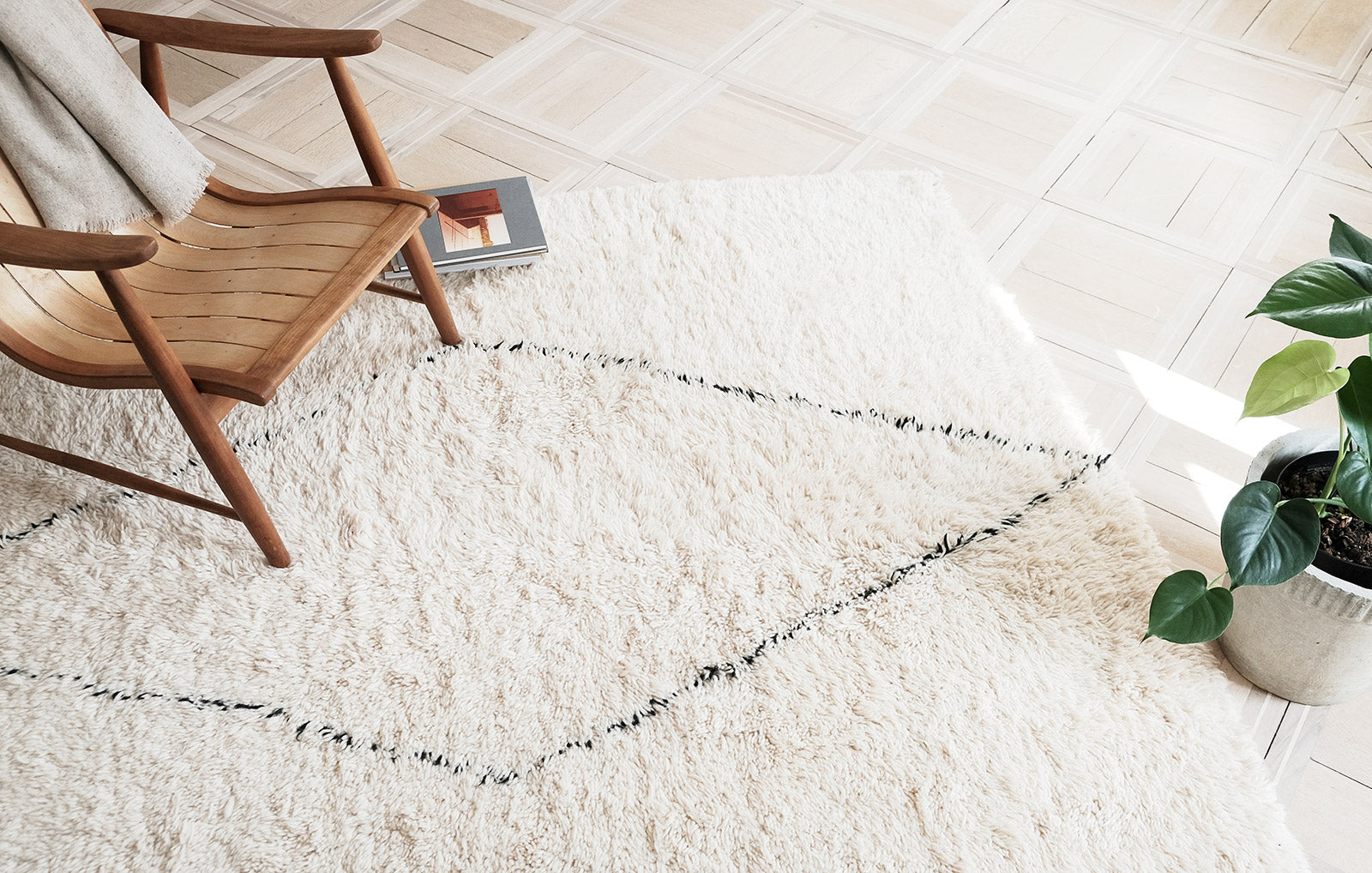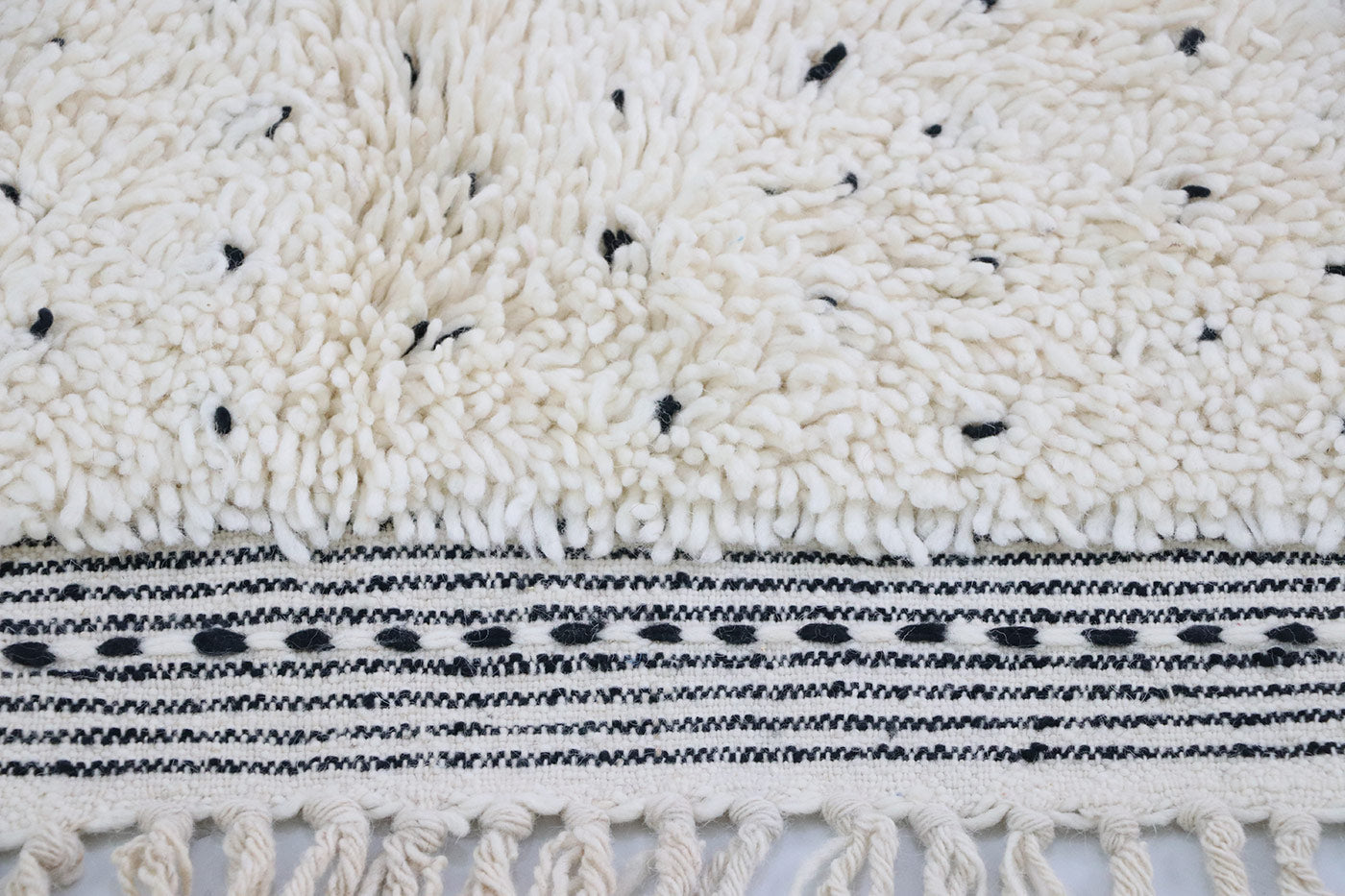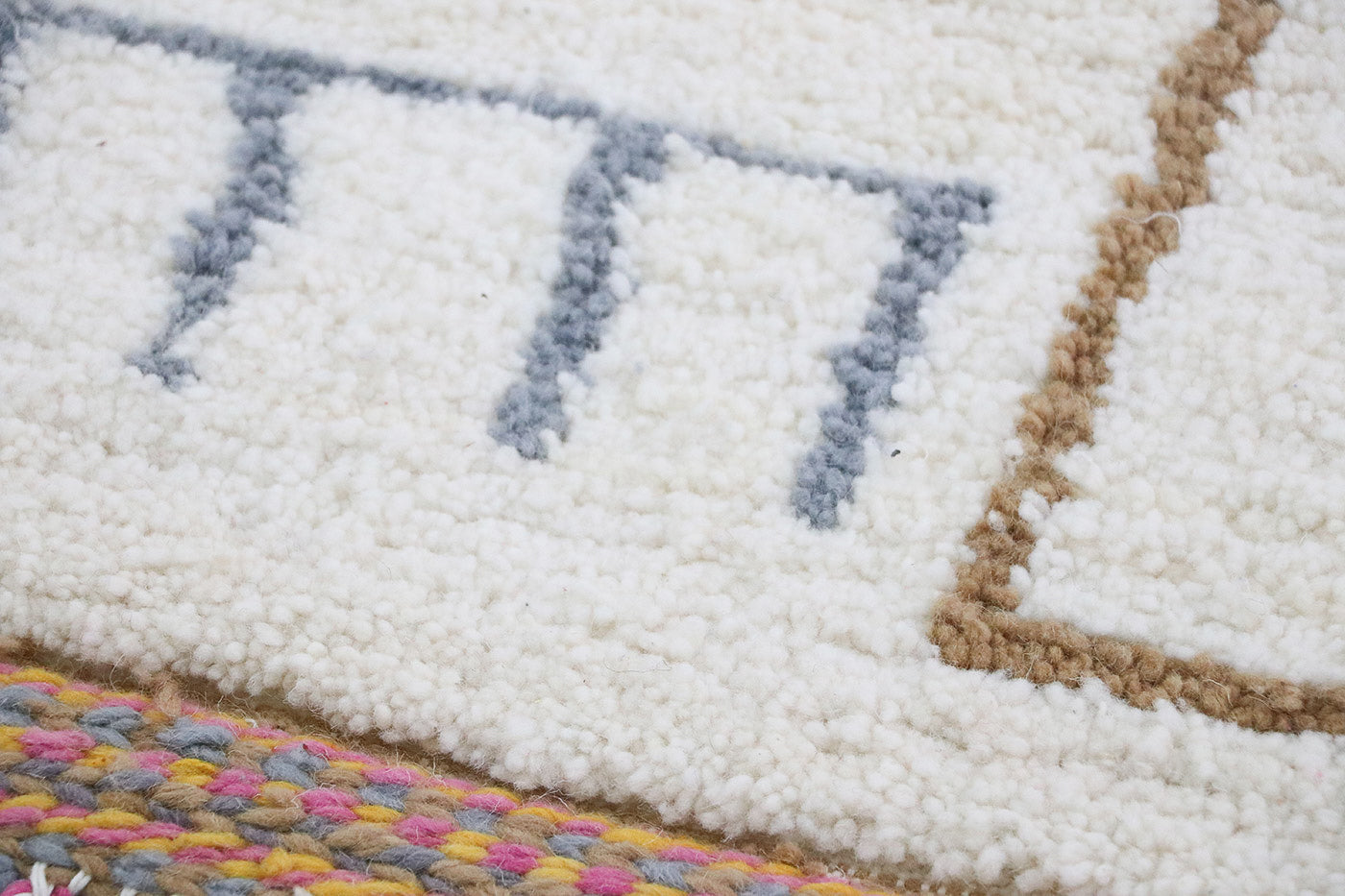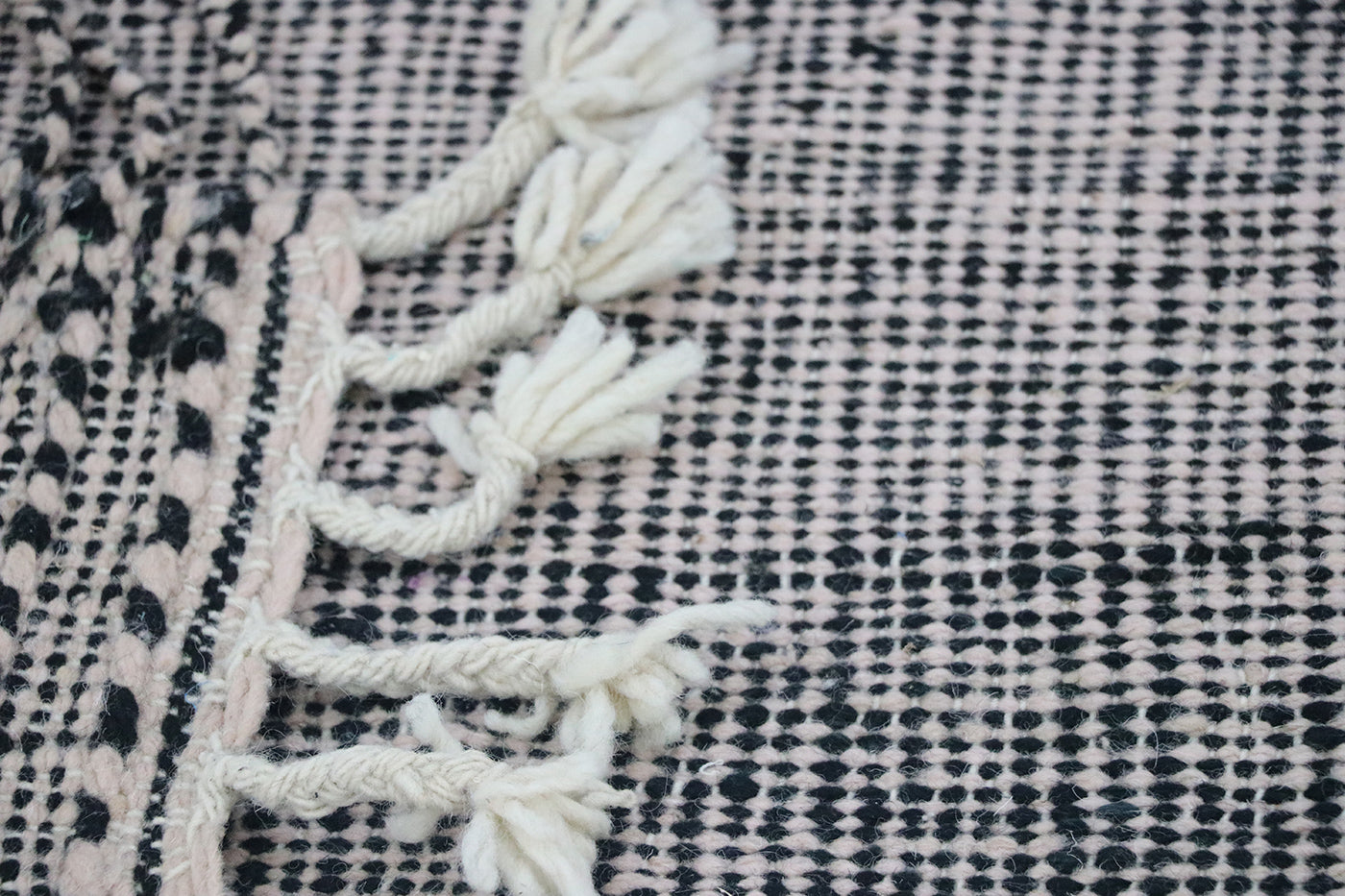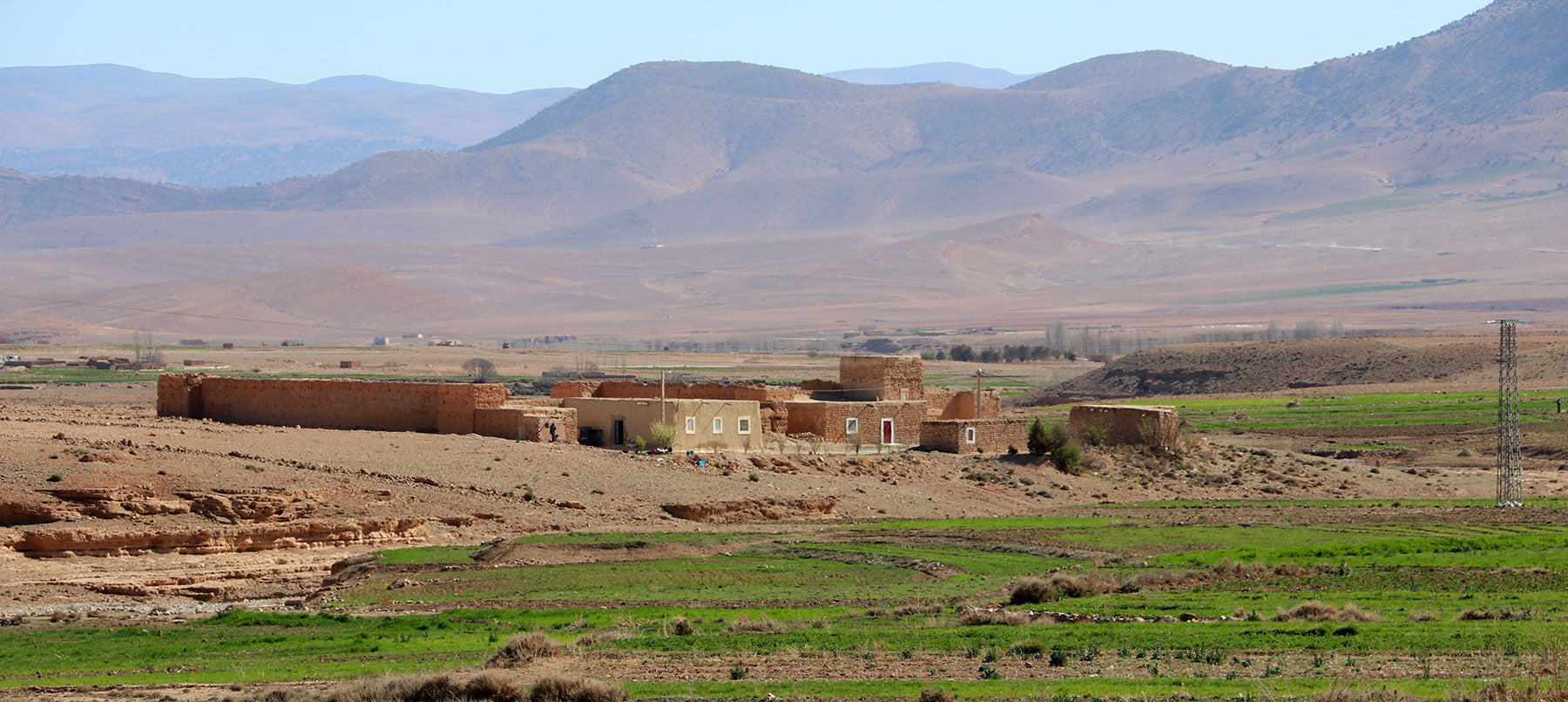The Tribes of Morocco and Their Unique Rugs
The tribes living in Morocco have developed their own types of rugs, which were not only made to be durable but also to beautify and improve quality of life. These rugs provided a soft luxury to the harsh nomadic life and protected the Berbers from the cold ground during the cooler months. Since 2010, we’ve been a reliable partner for truly authentic and fairly made Moroccan rugs, and we were actually one of the first online stores to bring the popular Beni Ourain rugs back to Germany.
So, the term "Berber rug" doesn’t just refer to the typical short-pile, compact Berber rug with classic brown patterns; it’s a general term for a variety of different types of rugs made by the Berbers. These can include flat-woven rugs (Kelims) as well as the typical pile rugs with varying pile heights and densities. The main material is almost always sheep wool, occasionally mixed with other materials, and sometimes cotton or even synthetic wool. You can also find recycled rugs (Boucherouite), similar to patchwork rugs, in the collection. Further down on this page, you’ll find more information about each type of Berber rug.
The Origin of Different Types of Rugs in Morocco
The different Berber rugs are usually named after their region or the specific Berber tribe that makes them. A trained eye can identify the type of rug by its knotting technique, wool, and often by specific patterns. For example, a Beni Ourain rug has a different knotting technique than a Beni Mrirt rug, and an Azilal rug shows a different knotting and pile length. Nowadays, all types of rugs can be sourced from larger weaving factories in Morocco, but this doesn’t have much to do with the original, traditional manufacturing methods. Authentic and truly original Berber rugs have their roots in various regions and are traditionally made at home or in small cooperatives.



